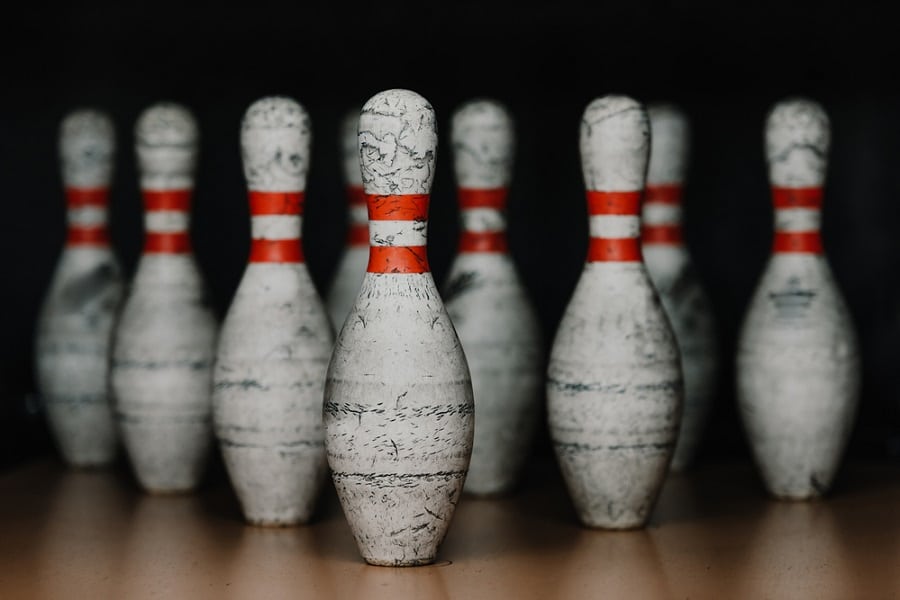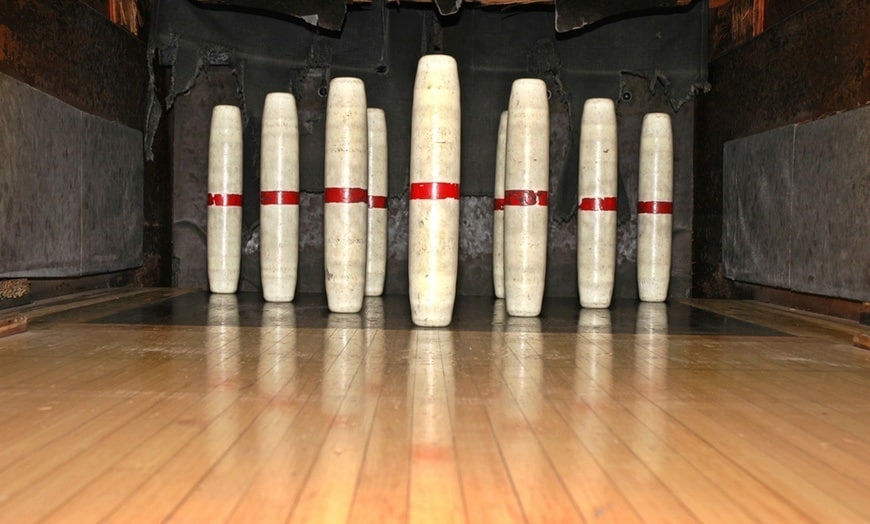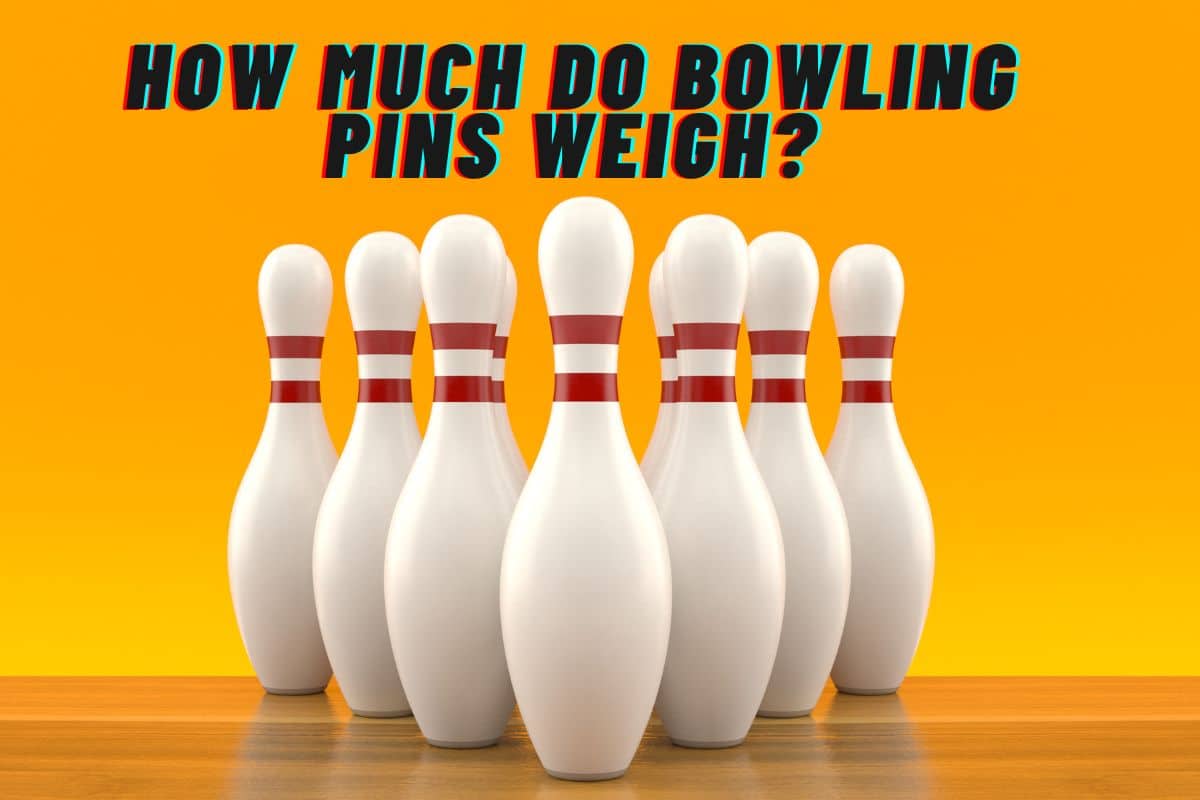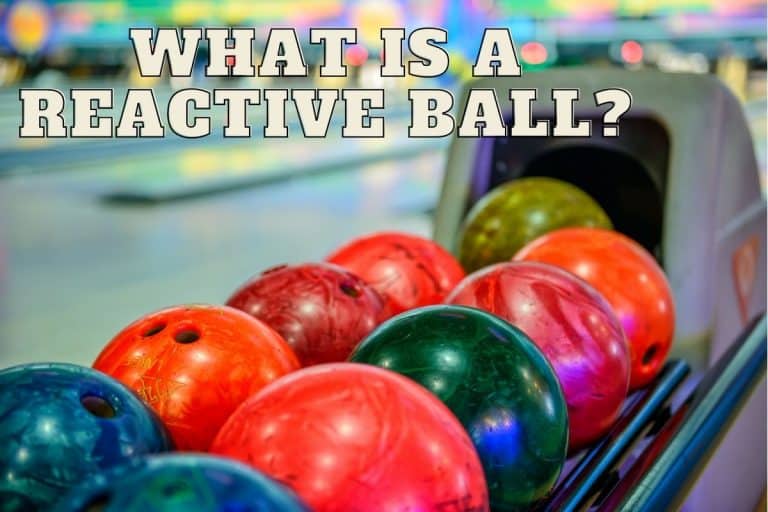How Much Do Bowling Pins Weigh and What Material Made of?
Bowling pins are a must-have for you to play any bowling game. Since they come in different sizes, they weigh differently. So, how Much Do Bowling Pins Weigh? Check out this article for detailed information!
How much do bowling pins weigh? The USBC regulates the specifications for bowling pins, including their size and weight. Standard bowling pins weigh 1.5 kilograms (3 pounds) and may weigh up to 3 kilograms (10 pounds) (1.6 kilograms).
If you are interested in knowing why USBC sets standards for bowling pin weights, various types of bowling pins available, average pins prices, and more, this article is for you!
Why Does the USBC Set Standards for Bowling Pin Weights?

Due to its responsibility for the sport's governing laws, the USBC sets standards for pin weights. In the case of a televised competition, for example, it specifies the kind of equipment competitors are allowed to use.
The USBC also governs the usage of certain balls and gloves in championships and other competitions. Therefore, bowling transforms into a more democratic sport when done in this manner.
Does The Weight Of A Bowling Pin Make A Difference?
When it comes to maintaining the game of bowling balanced for players of varying abilities, the weight of the pins plays a critical role. The rule states that the bowling pin should be capable of supporting 24% of the mass of a giant ball allowed by law. Balls may weigh up to 16 pounds plus 0 ounces, the maximum permitted by rules.
If a bowling pin is of a hefty weight, it will be impossible for a ball to knock it. Equally, if the bowling pins are excessively light, the game will be a farce since they will fall over so quickly.
The bowling pin's weight of about 24% of the highest ball weight is enough of a challenge to make the game fun without making perfection unachievable.
What are some of The Various Types of Bowling Pins Available?

When it comes to bowling pins, there are more options than just the usual ten-pins. Other options include:
- Candlepins are the highest bowling pins, measuring 15.75 inches in height and weighing 2.8 pounds. Furthermore, they are entirely cylindrical, with no narrowing at either end.
- Nine-pins, a German bowling game (sometimes spelled Kegels), is widely played throughout Europe. Nine-pin bowling pins have a head weight of 2.86 pounds and have a wire to a pinsetter on the alley.
The duckpin is another standard pin you can quickly tell since it's the smallest and lightest pin in the game. The use of the duckpin is particularly prevalent in the Northeastern United States. They stand at a meager 4.75 inches and weigh about 1.5 kg.
Even though duckpins are visually identical to standard ten-pin bowling pins, they are chunkier and shorter in stature. Due to their tiny size and low weight, they are ideal for newbies.
What Is the Average Height of Bowling Pins?
When most people think of bowling bowls, they picture the standard ten-pins. Many bowling centers in the US have them since they are the standards. Their tallest point is 15 inches (380 mm), their most comprehensive is 4.75 inches (121 mm), and their thinnest is 1.8 inches (4.6 mm).
What material makes bowling pins?
In the same way that the US Bowling Congress regulates a bowling pin's weight, it also specifies the materials that should create one. To make a bowling pin’s core, you should use new or previously used hard maple.
Bowling pins need a certain kind of maple only available north of the 45th parallel, which transverses the northern US. The center technically allows for additional materials only after their vetting and authorization.
Due to lower mineral concentrations, the density of this parallel is higher than that of regular wood. Furthermore, almost all bowling pins have a similar design aesthetic. They are white with crimson vertical stripes (s). Simply adding this layer to the solid piece of maple will do the trick. The maple has a coat of white lacquer applied, followed by a layer of transparent color. As a result, the bowling pins last longer and look better.
What is the average price of bowling pins?
There’s a wide range in cost of bowling pins since they vary in material and design, even though they are all around the same size and weight. The price will increase if you use more robust and expensive materials to make the pins.
But the price decreases if you use cheaper, lighter, and less long-lasting materials. Bowling pins range in price from about $4 to an unimaginable high five figures. However, you can always find durable, high-performing bowling pins from $100 to $170.
Why Do Bowling Pins Have A Unique Shape?

Each component of a bowling pin is essential to the functioning of the pin itself. Although the pin may seem uniform from top to bottom, this is deceptive.
The bowling pin's crown is its exact apex. To be clear, the part of the object touching the ceiling is the apex, and the head is located just below the tip. The slender surface at the very top is the head, while the crown is at the very peak of the head.
The bowling pin's neck tapers slightly downward and is its most delicate part that links the upper and lower parts of the pin. Again, the bowling pin's belly is much broader than its neck. Lastly, it has a “skirt” at the bottom and acts like a base for resting on the floor.
How Much Space Should There Be Between Bowling Pins?
In bowling, if space you all pins are too closely spaced, it makes the game too easy. When the pins are far apart, on the other hand, it's hard to knock down over one or two.
Therefore, there are specifications for the distance between the pins. If you are bowling ten-pin bowling, you should space the pins 12 inches apart. A standard bowling ball is 8.5 inches in diameter; thus, there is a clearance of around 7.234 inches before the ball will contact a pin.
Conclusion
The USBC specifies the maximum weight and acceptable materials for bowling pins. There are variations on the standard ten-pin set, including the nine-pin, duck-pin, and candle-pin. You can use new or previously used hard maple for the core of bowling pins.

![Are Bowling Alleys Flat? [No, Sloped!]](https://www.bowlingknowledge.com/wp-content/uploads/2023/03/Are-Bowling-AlleysFlat-768x512.jpg)
![How to Throw a Bowling Ball [Straight & Hook]](https://www.bowlingknowledge.com/wp-content/uploads/2023/01/How-to-Throw-a-Bowling-Ball-768x512.jpg)

![Can you Resole Bowling Shoes? [Ultimate Guide]](https://www.bowlingknowledge.com/wp-content/uploads/2023/03/Can-you-Resole-Bowling-Shoes-768x512.jpg)

